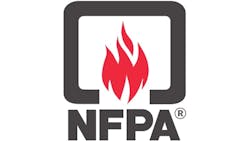NFPA Fire & Life Safety Policy Institute publishes '2019 Year in Review' report

May 12, 2020 – The NFPA Fire & Life Safety Policy Institute has released the 2019 Fire & Life Safety Ecosystem™: Year in Review report. The new report, which highlights a number of U.S. and international life safety incidents, looks at the circumstances that led to each tragedy and examines the current, overall health of the global fire and life safety system.
According to the report, each incident serves as a painful reminder of a current safety system that repeatedly fails to protect the public and first responders; taken together, they represent a catastrophic failure of the Fire & Life Safety Ecosystem™, a framework the National Fire Protection Association (NFPA) developed in 2018 that identifies the components that must work together to minimize risk and help prevent loss, injuries, and death from fire, electrical, and other hazards.
“In today’s fast-paced society, our changing infrastructure, new technology, evolving risks, and competing priorities all put pressure on maintaining strong fire and life safety protections,” said Jim Pauley, president and CEO of NFPA. “The Fire & Life Safety Ecosystem framework helps tie together all of the essential elements that keep people and property safe in our modern world.”
The Fire & Life Safety Ecosystem consists of eight components that are interdependent. When calamities happen, the cause of these situations can often be attributed to a breakdown in one or more of the elements of the safety ecosystem. The examples referenced in the “Year in Review” report point to the gaps, cracks, and weaknesses in the Ecosystem that otherwise should protect communities.
“By examining the incidents in the report, communities will not only see the fault lines that enabled each calamity, but they can use the examples to help address fractures in their own fire and safety ecosystems to create safer areas to live,” said Pauley.
The free 2019 Year in Review report, in addition to other resources and information about the NFPA Fire & Life Safety Ecosystem™, can be found on NFPA’s Ecosystem webpage.
As all of us continue to navigate the evolving situation with COVID-19, NFPA remains committed to supporting you with the resources you need to minimize risk and help prevent loss, injuries, and death from fire, electrical, and other hazards. For information on NFPA’s response to the coronavirus, please visit our webpage.

